AstroPiBox is available for sale on the Clef des Etoiles web site.
June 11, 2020
A new version of the AstroPiBox software is available (version 1.0.5). It is based on the latest versions of the following software components available in June 2020:
- Linux (Raspberry Pi OS Buster);
- INDI Library (version 1.8.5);
- PHD2 Guiding (version 2.6.8);
- CCDciel (version 0.9.71);
- Cartes du Ciel (version 4.3);
- Kstars (version 3.4.2).
AstroPiBox is a portable platform dedicated to astrophotography. Its first objective is to provide the amateur astronomer with a reliable, easy to use and high quality autoguiding service. AstroPiBox also integrates several other software products and utilities to facilitate mobile astronomy : planetarium software with telescope control, image acquisition, astrometry resolution and light pollution simulation. The main objective of the AstroPiBox is to deliver an autoguiding service but the underlying platform (Raspberry Pi 4) is now powerful enough to support other functions such as image acquisition.
Autonomous Autoguiding
AstroPiBox integrates PHD2, a well-known open source autoguiding software. PHD2 represents the reference in the arena of autoguiding solutions for the amateur astronomer. All the required libraries have been pre-installed in the AstroPiBox Linux environment so that the PHD2 software can be directly and simply launched then used.

PHD2 on AstroPiBox has been tested with several different mounts and cameras, and it can be directly used with most configurations in a « plug and play » mode without having to adjust any parameter. This makes the solution very easy to use while continuing to benefit from the powerful features and algorithms which are provided by this software. It is of course always possible to adjust the numerous parameters proposed by PHD2 in order to refine the autoguiding results of a specific configuration.
AstroPiBox has been tested for autoguiding with the following equipment (either through a direct connection or through an ST4 port):
- Mounts: HEQ5, NEQ-6, AZ-EQ6, EQ8, Vixen GP-DX Sky-Sensor, Astrophysics, Avalon M-Zero, EQ3-2/EQ5 GoTo, EQ3-2/EQ5 motors (with ST4 port), EM200, ...
- Cameras: ZWO ASI, ATIK
It must be noted that AstroPiBox integrates the native drivers of ZWO ASI, Omegon, QHY, Starlight Xpress and ToupTek cameras which are often used to perform autoguiding. For these cameras, it is therefore not necessary to go through the INDI Library interface even if this stays possible.
INDI Library
AstroPiBox include a complete INDI manager (INDI is equivalent to ASCOM on Windows) with a set of drivers dedicated to astronomy equipment (camera, telescope controller, focus systems, weather monitoring, etc.). For instance, selecting a camera to be used with PHD2 is performed through a simple mouse clicker in the INDI manager panel.
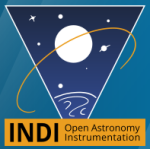 | 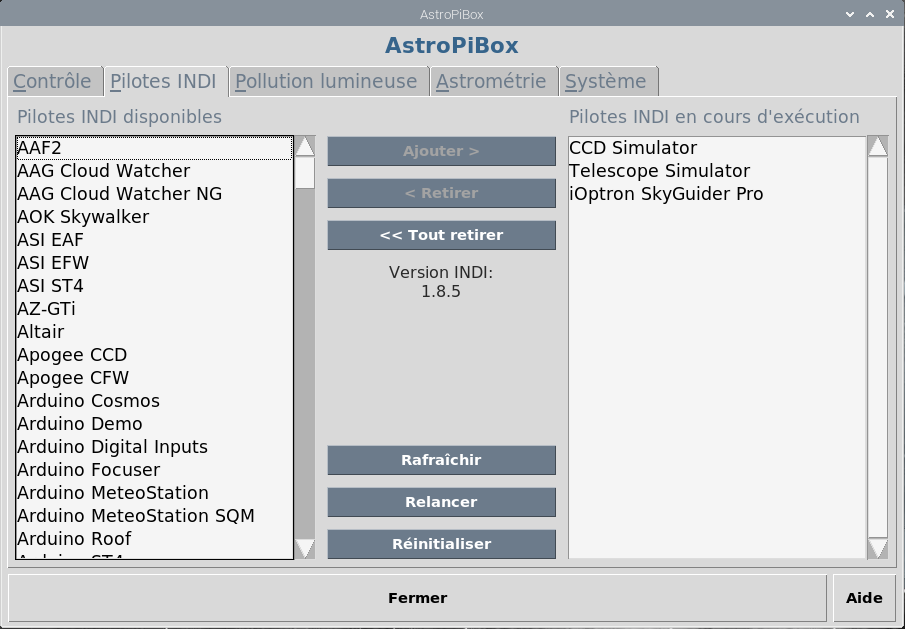 |
Planetarium, GoTo and Image Acquisition
In addition to PHD2, AstroPiBox integrates in its current version the open source software products KStars, Cartes du ciel and CCDciel which can be easily launched from an intuitive GUI. Beyond its stellar map features, KStars is also equipped to drive a telescope in a GoTo mode through the INDI library installed on the Raspberry Pi.
CCDciel constitutes a simple and efficient tool to perform image acquisitions from a camera connected to the Raspberry Pi.
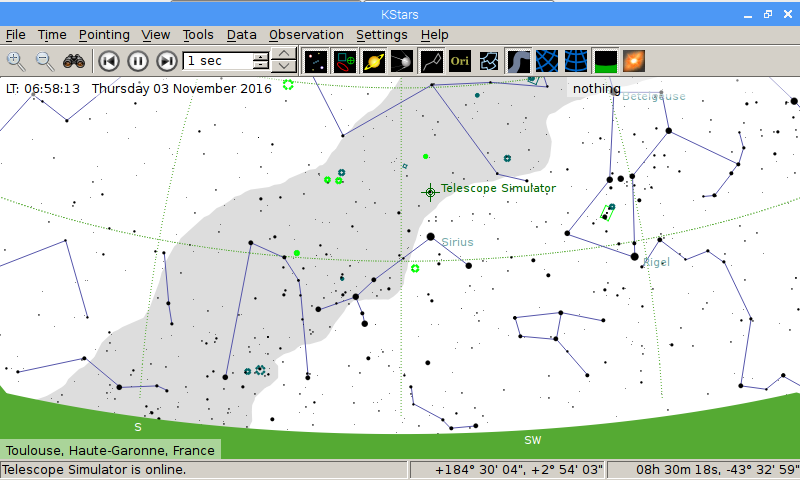 |  |
Astrometry Resolution
AstroPiBox also embeds the well-known astrometry resolution engine Astrometry.net which has been specifically ported on the Raspberry Pi platform along with its resolution index catalogues (no Internet connection is necessary to perform resolutions). The user just has to specify the image to be solved into the GUI as well as the sampling associated to the setup that took the image in order to obtain the result of the astrometry resolution in a matter of seconds. There is no need to specify an approximated image center to perform the image solving.
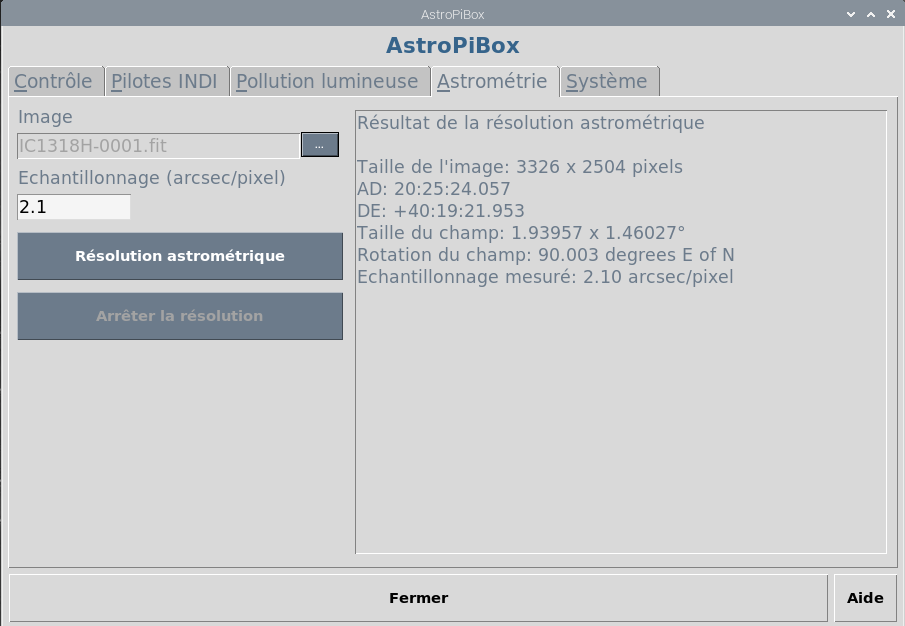
Light Pollution Simulation
AstroPiBox is delivered with an innovative tool to simulate the light pollution produced by public lighting. This greatly helps in the process of identifying the best spots to practice astronomy.
All what the user has to do is to specify a town name, its area code as well as a latitude extension for the map (in km) and AstroPiBox immediately generates a light pollution map centered on the requested town. At this point of time, only France cities can be simulated.
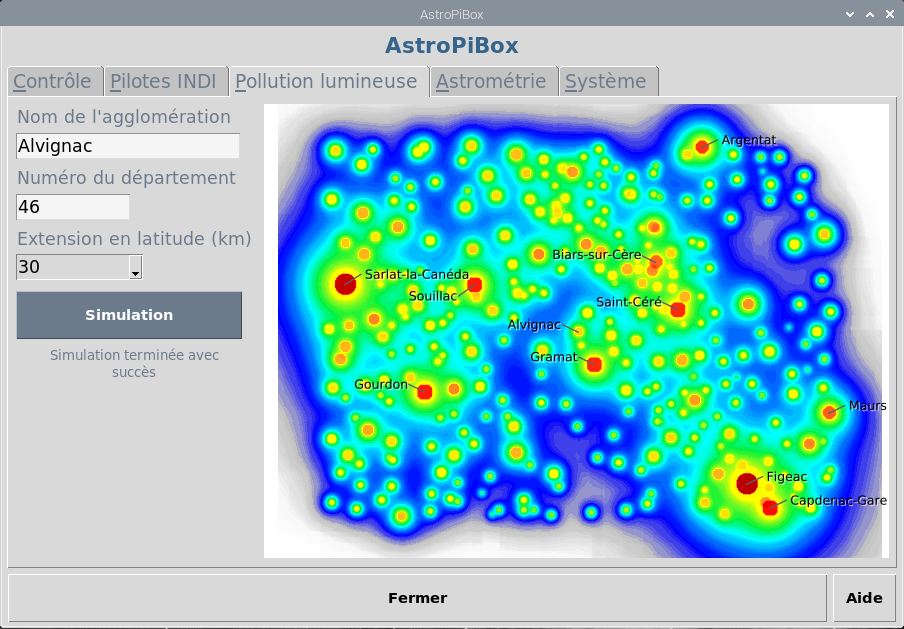
Proposed Packaging
Version 1.0.5 of the AstroPiBox is now only available under the form of a micro-SD card that needs to be put into a Raspberry Pi 4.
| Packaging | Use Case | |
| AstroPiBox SD | Micro-SD card to be plugged into a Raspberry Pi 4 |
|
